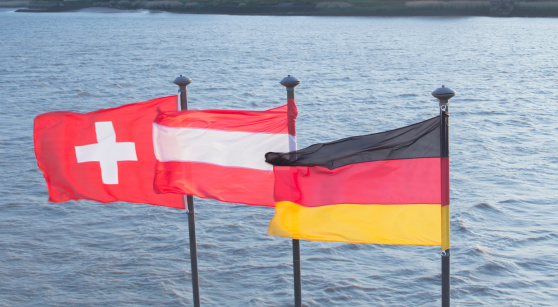You may be inclined to think the German language is exclusively spoken in Germany. But the truth is there are many variations of the language present in other countries too.
Of course, standard German is the native language of Germany, but two other countries who have adopted their own variation of this language are Switzerland and Austria.
Throughout all the countries it is present in, it is estimated that 100 million people use German as their native tongue, and 80 million as their second.
So, this leaves us wondering how are Swiss, Austrian and standard German different from each other, and what makes them the same?
Standard German
German is mainly prevalent throughout central Europe. It is the official language of Germany and one of the most widely studied languages in the world. The sheer volume of native German speakers spans across a multitude of countries.
According to various sources, the earliest example of written German dates to as early as the 8th century. It has since evolved considerably, using the Latin script writing system.
Austrian German
Austrian German is a variation of German spoken throughout Austria. It is considered the lingua franca of the country.
One difference to note between Austrian and standard, is that there are some word differences. Below are some examples, to enable us to see the differences in action.
German: die Tomate
Austrian: der Paradeiser
English: Tomato
German: die Kartoffel
Austrian: der Erdapfel
English: Potato
A further grammatical difference is that Austrian German omit certain letters from standard German phrases. For example: Ich Bin becomes I Bin (I am).
Even though there are some differences, you may find that some typical German phrases remain the same. Despite the grammatical differences, Standard German and Austrian German remain mutually intelligible, meaning that Germans can understand Austrians and vice versa.
Swiss German
Swiss German is the variation of German that is spoken throughout Switzerland. We should note that unlike Standard and Austrian, Swiss German incorporates various different dialects. They are simply all grouped into the same language category.
Of course, there are many differences between this variation and the others. Swiss German is strongly influenced by English, having borrowed many words from the language. In addition, French is a further language which strongly influences Swiss dialects.
Similar to Austrian German, Swiss German also uses standard German phrases from time to time, meaning that it is not completely different.
Final Thoughts
From everything we have found out about the three dialects, we can see that Standard, Austrian and Swiss are three separate dialects spoken in different countries. Although they are different in many ways, the influence of early German is present throughout all three.
Do you require our services?
If you require a translation or interpretation service, visit Crystal Clear Translation for a quote.


